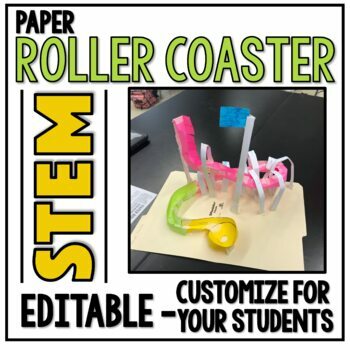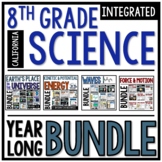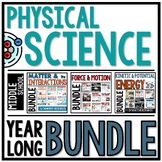Roller Coaster STEM Activity : Paper Roller Coasters
- PDF
What educators are saying
Also included in
- The bundle focuses potential and kinetic energy, examples of potential and kinetic energy including chemical energy, gravitational potential energy, elastic energy, electrical energy, etc., and the law of conservation of energy. The lesson sequence includes reading passages, guided notes, online simPrice $25.00Original Price $34.00Save $9.00
- Teaching is hard! Make things easier with this bundle that has everything you need for the full year. This year long bundle includes everything you need to teach a middle school level course that meets the NGSS 8th Grade integrated standards for California. This bundle contains a variety of engagiPrice $185.00Original Price $252.50Save $67.50
- Teaching is hard! Make things easier with this complete year long curriculum that has everything you need to teach a full year of physical science . This year long bundle includes everything you need to teach a middle school level course that meets the NGSS physical science standards for. This bundlPrice $179.20Original Price $256.00Save $76.80
Description
Build a roller coaster while learning about kinetic and potential energy in this engaging STEM challenge! Your students will love learning about the physics of roller coasters! Students research, plan, build, and test marble roller coasters made of paper and tape. This is a yearly favorite! Students apply their understanding of kinetic and potential energy transformations as they create 4 thrills in their paper coasters. This is an annual favorite in my class!
Also includes an interactive lesson on potential and kinetic energy using a virtual roller Coaster simulation. This worksheet looks at the relationship of kinetic and potential energy and the effect of speed and height energy transformations. This is a great no prep introductory activity, used with absent students, or a sub plan.
All pages of the resource are EDITABLE, so you can modify it to meet the needs of your students - bump up the challenge for older students or simplify for younger ones.
This STEM activity follows the engineering design process and challenges students’ problems solving and critical thinking. The students design a roller coaster with different “thrills” including hills, loops, funnels, etc. Their marble needs to make it through their roller coaster from beginning to end without help and land safely at the bottom.
What's included?
- Teacher directions with link to printable templates and fully editable student sheets.
- Student requirements and grading sheet (editable)
- Pictures of sample projects
- Project Planning page (editable)
- Project Reflection and Questions (editable)
- Virtual Roller Coaster Worksheet (editable)
Looking for other Energy resources? Check out:
- Kinetic and Potential Energy Webquest
- Kinetic and Potential Energy Digital Stations
- Kinetic and Potential Energy STEM challenges
- Graphing Kinetic Energy
- Kinetic and Potential Energy Bell Ringers
- Kinetic and Potential Energy Escape Room








